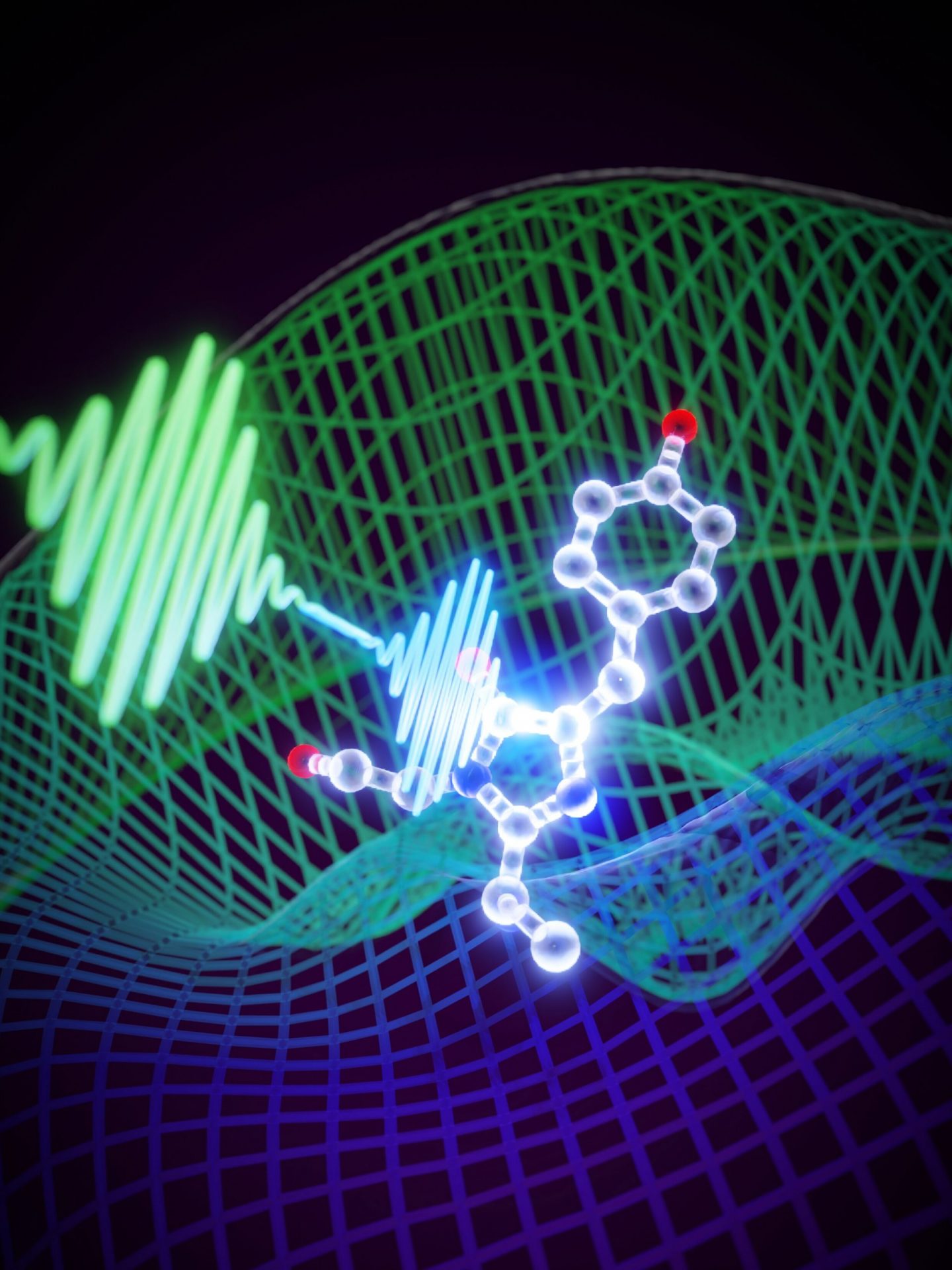Discovering how molecules change when they react to stimuli like light is crucial in biology, especially in processes like photosynthesis. Scientists have been tirelessly working to unravel these changes in various fields. Now, by combining two of these fields, researchers have opened the door to a new era of understanding the reactions of protein molecules, which are fundamental for life.
Their groundbreaking results are published in the prestigious journal Nature Chemistry.
Crystallography, a powerful technique in structural biology, allows scientists to capture “snapshots” of how molecules are arranged. In this study, the research team integrated crystallography with spectroscopy, a technique that maps vibrations in the electronic and nuclear configuration of molecules. By demonstrating this new technique at X-ray laser facilities around the world, the team revealed that the initial movements of molecules within the protein they studied are a result of “coherence,” a vibrational effect. This discovery, shown experimentally for the first time, highlights how spectroscopy can provide new insights into the traditional methods of structural biology.
Professor Jasper van Thor, the leader of the international research team from the Department of Life Sciences at Imperial, explains, “Proteins are responsible for every process that sustains life. To understand how these complex molecules perform their functions, we need to learn about the arrangement of their atoms and how this structure changes during reactions. With spectroscopy, we can now visualize ultrafast molecular movements in pictorial form by solving crystal structures. This breakthrough gives us the tools to comprehend and even control molecular dynamics at near-atomic resolution on extremely fast timescales.”
Combining Techniques for Unprecedented Insights
To combine crystallography and spectroscopy, the research team utilized X-ray free-electron laser (XFEL) facilities worldwide. These facilities, including the Linac Coherent Light Source (LCLS) in the U.S., the SPring-8 Angstrom Compact free electron LAser (SACLA) in Japan, the PAL-XFEL in Korea, and the European XFEL in Hamburg, allowed the team to capture the motions of reacting proteins on the femtosecond timescale.
By shaping laser light to control the protein’s motions, the team created “coherent control.” After conducting multiple experiments and combining the data with theoretical methods, they discovered that the ultrafast motions measured on the picometer and femtosecond scales do not belong to the biological reaction itself, but rather to vibrational coherence in the ground state. These motions dominate within the so-called vibrational coherence time.
Professor van Thor emphasizes, “Our experiment revealed that the conventional time-resolved measurement was actually dominated by motions from the dark ‘reactant’ ground state, which are unrelated to the biological reactions triggered by light. These motions correspond to what is traditionally measured by vibrational spectroscopy and have a different, yet equally important, significance. This experimental confirmation aligns with previous theoretical predictions and will significantly impact the fields of time-resolved structural biology and ultrafast spectroscopy.”
An Unprecedented Collaborative Effort
The research paper includes 49 authors from 15 institutions, representing seven years of work, including experiments conducted remotely during the pandemic. Professor van Thor acknowledges the importance of collaboration in achieving these results, stating, “In a fast-moving field where XFEL beamtime applications are highly competitive, I am extremely grateful to all the co-authors, team members, and collaborators for their perseverance, hard work, and dedication to our shared objective. It required a strategic and longer route, but we have achieved something remarkable together.”
Dr. Sébastien Boutet, a co-author from the SLAC National Accelerator Laboratory, praises the capabilities of X-ray lasers, saying, “These results demonstrate the unique knowledge that X-ray lasers can provide about biology in motion. The combination of short bursts of X-rays and cutting-edge laser technology opens up an exciting future of discovery in this field.”
Professor Gerrit Groenhof, another co-author from the University of Jyväskylä, Finland, adds, “Using coherent control to extract relevant molecular dynamics in the electronic excited state is essential for understanding how photoreceptor proteins mediate the photo-activation process. Witnessing a molecular movie of photobiology in action is not only fascinating but may also unlock principles for designing new light-responsive materials.”








